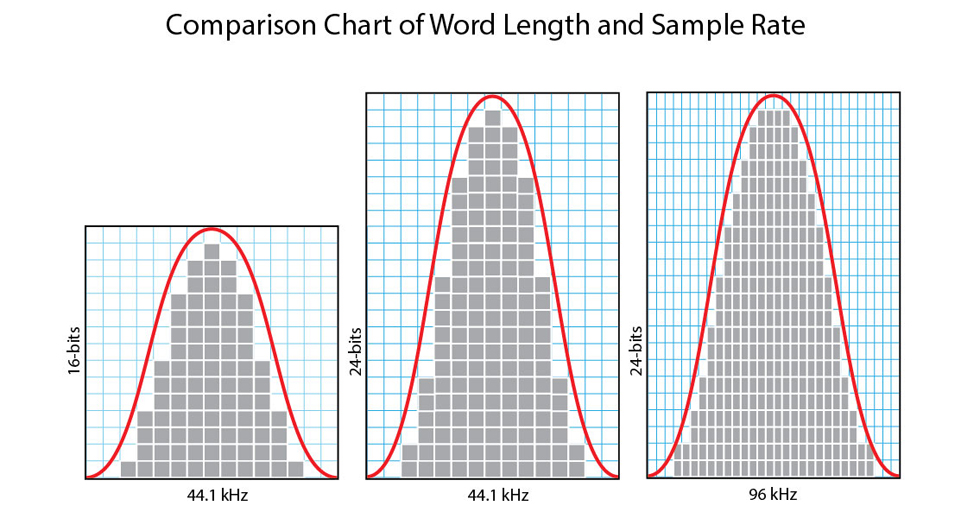Who hasn’t heard of MP3s? Chances are, you might’ve also heard of formats like WAV, OGG, AAC, and FLAC. Also when downloading music online, you may have seen terms like 128kbps and 320kbps. What do these mean exactly? We’ve compiled a detailed guide just for that.
To understand these terms, we have to start from the beginning, right from where the sound is recorded. Sound consists of analog waves, and it is stored as digital information on our computers.
There are 4 key terms associated with recording music:-
1) Sample Rate (S):
An analog signal is in the form of a wave, and it is converted to digital information by measuring the amplitude of the signal or ‘samples’ each second. A typical sample rate used for music is 44.1kHz, meaning 44100 samples are taken every second. Higher sampling rates like 384,000 Hz are used for high-quality audio. It is analogous to frames per second(fps) in videos.

2) Bit Depth (B):
Bit Depth is the number of bits of information used to represent each sample. It is like the dynamic range of the audio. Commonly, bit depths of 16 bits are in practice, with 24 bits being used for higher quality audio.

3) Number of Channels (N):
Monaural sound consists a single channel of a sound whereas commonly used Stereo sound usually consists of 2 separate channels of sound. This is used to provide directionality to sound.
4) Bit Rate(R):
Bit Rate is the number of bits processed over a period of time. It is the term generally used to indicate audio quality. Numbers like 320kbps which you see when downloading songs are actually the bit rate of the audio file. It indicates that 320 kilobits of data are stored in every second of the song. It is given by the formula:-
R = S*B*N
A typical uncompressed(explained below) audio file has a bit rate of 44100*16*2 = 1411200 or 1411 kbps. Thus a typical uncompressed audio file 4 minutes long would be of size 1411k*240 = 338688000 or approximately 34 megabytes. Higher the bit rate, better is the audio quality.

As you can imagine, storing original audio files is not feasible even by today’s storage capacities. That’s where compression comes into play, explained in Part 2

